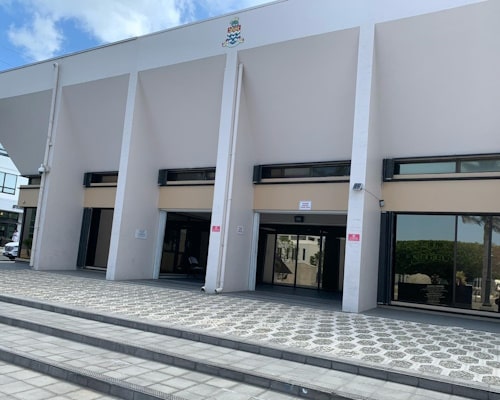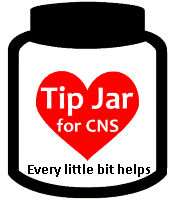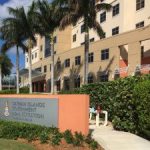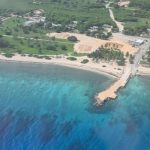Over 42,000 corals treated in SCTLD crisis
(CNS): Dr Croy McCoy, a senior marine biologist at the Department of Environment, has warned that coral reefs are in crisis and the current generation of scientists may be the last people who can do anything about their survival. A team of divers has treated over 42,000 corals in Cayman Islands waters with an antibiotic paste to protect them from the rampant spread of stony coral tissue loss disease, McCoy told a group of experts at a technical workshop on corals, as he outlined the efforts needed to save the reefs from multiple threats.
At the workshop, part of a four-day conference of coral scientists and members of the working group on Coral Conservation in the Overseas Territories (C-COT) that opened here on Tuesday, McCoy said that reefs everywhere are in peril and they must all act because it will be too late for the next generation of scientists to do anything. He stressed the importance of collaboration in addressing SCTLD in particular because, while it is not the only threat to reefs, it is one of the worst. However, it is galvanizing people to action.
“In my three decades as a coral reef ecologist I have never seen so many scientists working together,” he said. Given the complexities of this “grave threat”, there could be no other way because, going forward, the world has to do a much better job managing coral reefs, he said.
Outlining how the DoE here had acted to fight SCTLD and tried to slow down the spread, he said that at first, they felt as if they were “facing a losing battle” when the usual firebreak management system didn’t work. But he said the antibiotic paste has given each one of those tens of thousands of corals that have been treated a fighting chance, “at least until there is a better option”.
McCoy said that, even though the disease has now encircled the whole of Grand Cayman, some of the treated corals are showing resilience, which is a sign of hope. He said the collaboration of the scientific community was very important, as he noted the data collation and the part they are all playing in finding solutions to this disease.
The C-COT workshop, funded by the Darwin Initiative, is focused on SCTLD research and control, and includes marine scientists from the territories, as well as academics from UK and US universities who are working on this subject.
The chief officer in the climate ministry, Jennifer Ahearn, opened the conference on behalf of Premier Wayne Panton, who had been called to an unexpected meeting. She said that the people attending the workshop were the hope for coral reef survival.
Ahearn said it had been heartbreaking to watch SCTLD encircle Grand Cayman and see tens of thousands of corals under attack. But she warned that there were other threats to reefs to contend with, which was a fundamental issue not just for small island nations but all of humankind. “We all need to do a better job of managing reefs all over the world,” she said.
The workshop includes Cayman’s first Coral Fest, which will take place on Wednesday, beginning at 5:30pm, at the Westin and will be open to the public.
- Fascinated
- Happy
- Sad
- Angry
- Bored
- Afraid
Category: Marine Environment, Science & Nature





































These realities are beyond horrible, as a long time science diver, activist, SDG14 Ocean Ambassador, I have such mixed emotions over tradeoffs and WISDOM here up late at nights ponder this the odds of any or some tropical carrib N. Atlantic corals are going to survive the 2,3 or 4 +C predicted
.How much human effort here?
at what TRUE cost to deploy this 42000 treatments?
It is the longer view of outcomes I just can’t get past this, we know we have 40 year back log CO2 GHG and we know what that means to heating up further, not to mention what the pH will be when Nature deals with these gases…
are we not thinking long enough about the solutions we are deploying? I would much rather see science divers collecting the BEST marine DNA, leave no species out of this effort, to place this DNA in one of the many Noah arch DNA seed bank groups on the planet. Fix the Ocean 127 stressors, and then we start restoring from our seed banks. It might be 100 years to clean up the Sea, but why would we invest so much knowing the odds here is my nightmare?
Great job all involved. It’s a pity CIG cares so little for our reefs. Truely Cayman’s greatest treasure by far.
The reefs are dying.
What are we doing to limit toxic construction runoff and fine/charge the bad actors in that coddled industry? What have we done to line and contain/filter the leachate from the GT landfill and water treatment reservoirs? What new laws to limit type and duration of fireworks shows that rain heavy metals down onto the reef? The answer to all of these (and certainly not a full list) is that we haven’t really done much in the wider scope to address these known stress-causing contributors (changes in temperature, light, nutrient levels), or taking actions that might resemble credible marine stewardship. Given the lateness of the hour, we need to appreciate it’s not just ONE thing. There’s plenty of legislative and enforcement room to try to do better. It starts with PACT acknowledging coral as an ethical priority for longertermism and then filling these gaps in a material way as a matter of territorial responsibility to our future selves.
Nothing.
Reefs are trouble everywhere. It has become a barrage of attacks and humans are fully responsible. Like many, the Cayman reef can easily head down a road of no return. The leaders now and moving forward must fully embrace this water-world and the island’s natural features before there are no more second chances…
Can the project determine how much damange Fin made to the coral when it dumped it’s building waste? The fine silt from the outdoor lagoon spread across a wide area.
https://www.change.org/p/dale-crighton-protect-cayman-s-reefs-from-construction-development-damage.
Great job ! It’s nice to have some positive news in this world.
Perhaps masks would help?
Why reinvent the wheel? Study other policies like Key West. Don’t touch, Don’t take.
Humor is dead.
10 @ 5:24pm There’s humour then there’s humour. Your mask comment was barely sarcastic. Sorry.
Like I said
Bravo to all involved! I don’t dive but your efforts are appreciated. Hopefully they will be successful.
Keep up the good fight!